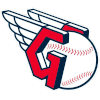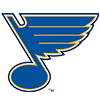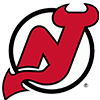Over the past few years, Life, the Universe and Everything, has gradually become a semi-regular part of Mound Musings. As we all try to answer the ultimate question, I'll occasionally dedicate this space to elaborating on questions from you, the readers, as well as take the opportunity to make brief comments about current events. If you have a pitching question, fire away, that's what we're here for.
Taking a walk on the wild side: We're into September, and I'm convinced a significant part of the "pitch clock is no big deal" talk during the spring was false. A lot of pitchers have really lost command. Maybe they can't locate within the strike zone or maybe they can't consistently throw strikes at all, but a lot of pitchers you could normally rely on are taking a walk on the wild side. And I really didn't see it improve over the season.
Obviously it's not everybody, as there were pitchers who still have had good years, but I had trouble identifying the most likely time bombs throughout the year. Initially I thought it was longtime veterans who struggled most. The thought was many older pitchers would struggle to adjust to the new pitch clock because they haven't had to worry about it over their careers, while many of the younger arms grew up with some restrictions designed to speed up the game. It made sense. But as the season wore on, I thought older pitchers seemed slightly more likely to adjust.
The
Over the past few years, Life, the Universe and Everything, has gradually become a semi-regular part of Mound Musings. As we all try to answer the ultimate question, I'll occasionally dedicate this space to elaborating on questions from you, the readers, as well as take the opportunity to make brief comments about current events. If you have a pitching question, fire away, that's what we're here for.
Taking a walk on the wild side: We're into September, and I'm convinced a significant part of the "pitch clock is no big deal" talk during the spring was false. A lot of pitchers have really lost command. Maybe they can't locate within the strike zone or maybe they can't consistently throw strikes at all, but a lot of pitchers you could normally rely on are taking a walk on the wild side. And I really didn't see it improve over the season.
Obviously it's not everybody, as there were pitchers who still have had good years, but I had trouble identifying the most likely time bombs throughout the year. Initially I thought it was longtime veterans who struggled most. The thought was many older pitchers would struggle to adjust to the new pitch clock because they haven't had to worry about it over their careers, while many of the younger arms grew up with some restrictions designed to speed up the game. It made sense. But as the season wore on, I thought older pitchers seemed slightly more likely to adjust.
The worst of it has been the never-ending challenge of identifying an upcoming good day or bad day for any particular pitcher. It was almost impossible. What did you have for breakfast? Are you feeling extra perky today? All you could do was wait and see. I thought the vast majority of pitchers would be okay in time, but for the most part I was wrong. Pitching simply was not as good in 2023, and command was the culprit.
Crime pays: Stolen bases have been up. Way up. There have been nearly twice as many thefts as we have seen in recent seasons, and the success rate was astronomical (over 80 percent). And, I'm not sure I can attribute the spike to bigger bases. I'm sure that's part of it, but I just don't believe a slightly bigger base is enough to get the rabbits all that excited. Fewer pick-off moves? I am rather hesitant to blame it on that either.
I think it's a combination of things. More walks and more hits will obviously mean more baserunners. Yes, pitchers are limited in how many times they can throw over to keep runners close. Maybe the pitch clock is a distraction? Maybe limiting defensive shifts encourages teams to put runners in motion (even though pitchers are struggling to throw strikes). Plus, I'm sure the bigger bases probably helped a little bit. And, interestingly, even guys who normally rarely steal became part of the new jackrabbit game.
Bottom line: More runners were in scoring position. I used to get nervous when owning a pitcher who couldn't control the running game (i.e., Noah Syndergaard). Now I'm terrified. The problem is, I'm not seeing many pitchers at all who I feel are capable of "controlling" the running game. In my mind this equates to WHIP becoming even more important. Keep runners off base, and they can't run you out of the game. It didn't happen. There were more baserunners, and that meant more base stealing.
Is it me or are injuries even more prevalent? Things were generally "normal" in the offseason and this spring. Pitchers were able to follow their normal workout routines. There were no delays in reporting dates for spring training. There was no pandemic to throw schedules into turmoil. Yet it seems like more pitchers missed time this season, and pitchers aren't pitching very deep into games. Okay, short outings aren't that unusual, especially with more pitchers experiencing command problems. Still, there seems to be more players on the IL, or often missing starts than usual.
I can't pin the injuries on rule changes – at least I don't think so – and I suppose that just continues a long and enduring trend of increasing injury risks. Every team has a diverse collection of guys who can hit triple digits, and I don't think our bodies were meant to do that. I find myself watching (even more) for smooth, repeatable mechanics, while trying to maintain some semblance of depth on my fantasy rosters.
The cream is rising to the top: Not too surprisingly, as we approach the end of the regular season, the "good" teams tend to gain focus. The Dodgers went 24-5 in August, and the Mariners have been on a roll, pushing into contention in the AL West, arguably the most exciting division in MLB with the Astros and Rangers. The Braves have been a run machine virtually all year, and they set a franchise homerun record when they notched their 250th late in August. They have a full month to extend that mark.
The point here is matchups. I have promoted the importance of matchups all season. Obviously, it's always been a key factor, but with the rampant pitching inconsistency, matchups are now very near the top of the list when deciding who pitches and who doesn't. In the past, I typically had what I referred to as "plug and play" starting pitchers – top-of-the-rotation types who were in the weekly lineup regardless of the opponent. There are still a few of those, but even the best pitchers get at least a second or third look when the opponent is Atlanta or the Dodgers. And now, with the better teams smelling the playoffs, that tactic is even more pronounced. Hey, at least it makes sense to seek out a good matchup. However, that doesn't make it easy.
The pros and cons of "churning": So, what exactly is "churning" in fantasy baseball? Basically, it's a never-ending rotation of players on a fantasy roster. A pitcher has a bad start, you give him the Alice in Wonderland treatment – off with his head! He goes, and a pitcher coming off a surprisingly good start, but quite possibly with far lower upside, replaces him. The tactic very often leads to a weekly dump of last week's flavor of the week to pick up the next prodigy, all while usually digging a deeper hole.
I have no problem with streaming, I do it all the time, but churning is different. In deeper leagues you are likely to have fringy pitchers who you can cut to make room for a guy who looks like a good temporary play, but churners have no loyalty, and to be honest, greatly enjoy making countless moves every week. That philosophy I can't buy into. It is tempting at times, but look at it this way: You drafted Pitcher A in the fifth round of a 32-round draft. I have to assume you felt he could be a solid No. 1 or No. 2 SP on your team. Now, injuries aside, you want to drop him for a flashy kid who just pitched six shutout innings with eight strikeouts in his MLB debut even though he went undrafted? He wasn't especially well thought of, and in that debut his deceptive motion generated a lot of swings at pitches out of the zone while several rockets were launched right at people. Who do you think is likely to end up with a better season?
If I'm going to replace a pitcher, I need to be confident the replacement will be better.
Some Notable Rotation Ramblings:
- While outlining this edition of the Musings, I was watching Bryan Woo's outing against Cincinnati (without the injured Matt McLain while Elly De La Cruz has been slumping). Woo has been sharp, so it sounded like a good matchup. He had nothing. No command. Nothing. As unpredictable as possible.
- I see the Dodgers Julio Urias was arrested for domestic violence (second offense), which is likely to get him a very long suspension. That makes the impressive first rehab start by Walker Buehler all the more important. He's going to need at least a couple more outings, but I'm anxiously awaiting his activation.
- Shohei Ohtani has indicated he will require some type of surgery, but there was no mention of Tommy John, and apparently this ligament damage is different than the injury he had before (that repair is still intact). It looks like he'll be able to keep hitting, and he confirmed his intent to continue both hitting and pitching.
- After a solid month at Triple-A Gwinnett, Michael Soroka made his return to Atlanta, that resulted in mixed results. He missed his spot a few times and got spanked, but he also threw some very nasty pitches. Unfortunately, he left early with right forearm inflammation. The guy just can't seem to catch a break.
- The Rangers' Nathan Eovaldi returned from six weeks off due to a forearm strain without a rehab assignment, but that may not have been the best idea. The Astros tagged him for four runs while he recorded just four outs. Give him a mulligan on this one, and look for him to get back in a groove fairly soon.
Endgame Odyssey:
Interestingly, this has been one of the quieter weeks in the bullpens. Most saves have gone to pitchers you might expect. The Angels' Carlos Estevez has not been all that reliable of late, but he's probably the best they have right now. Jose Soriano is perhaps the best option, at least until Ben Joyce, who just started a rehab assignment, returns. I love Andres Munoz, but I wonder if his shoulder has been acting up a bit. He's done alright, but he's more dominant than he has shone. I think fire-baller Matt Brash might take the closer's reins if Munoz needs a break. There is one seriously broken bullpen in Colorado as Justin Lawrence continues to struggle. Tyler Kinley did salvage a save, but he's not really a closer. The Cardinals were finally able to activate Ryan Helsley from the IL. I would expect to see him eased back into the closer's role, and that process could be accelerated with JoJo Romero going on the injured list with a knee issue. I'm watching with interest as the Nats' Tanner Rainey works his way back from Tommy John surgery. I doubt if it will be this year, but when fully back to health, I think we could see him closing games.








































